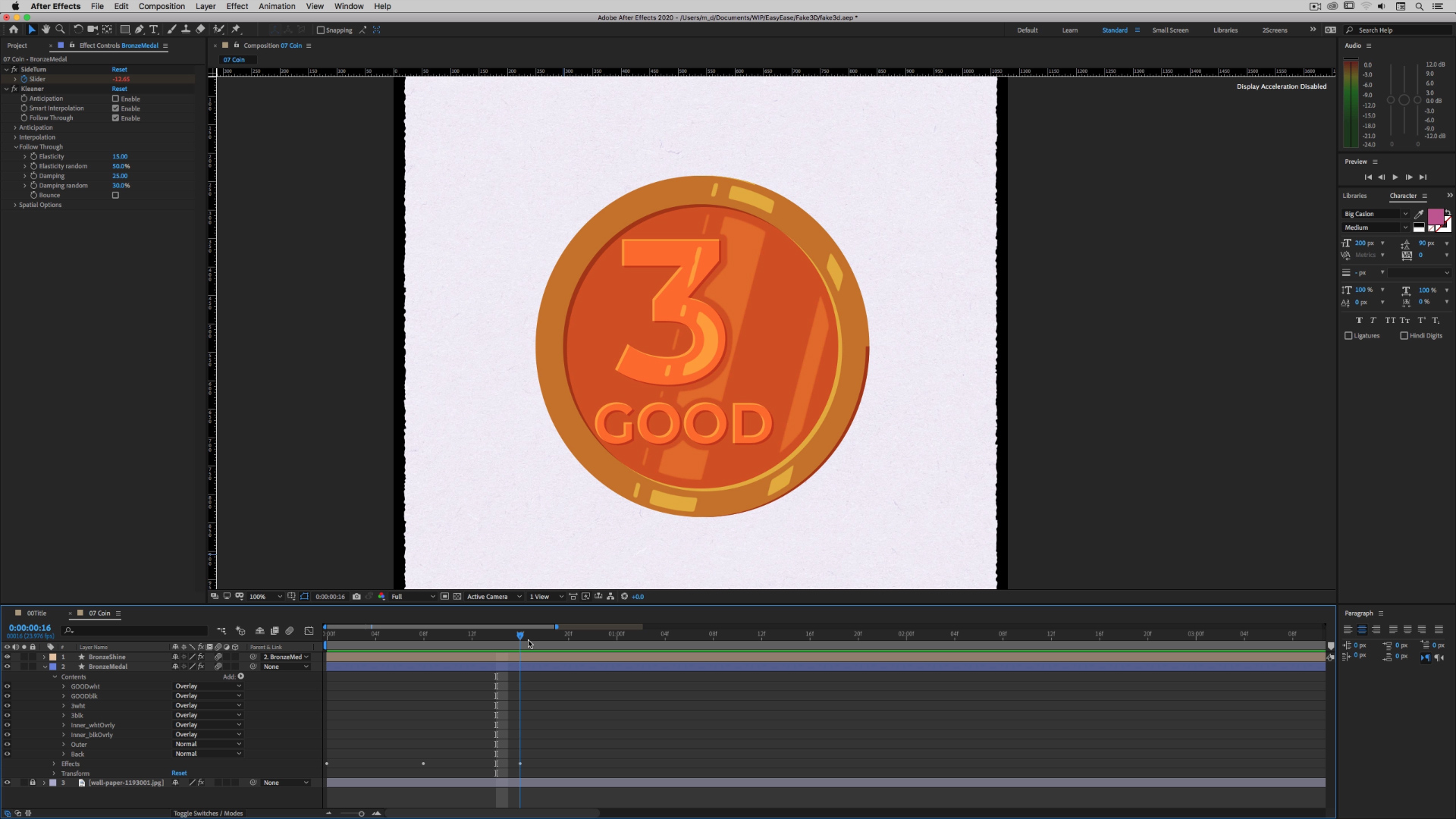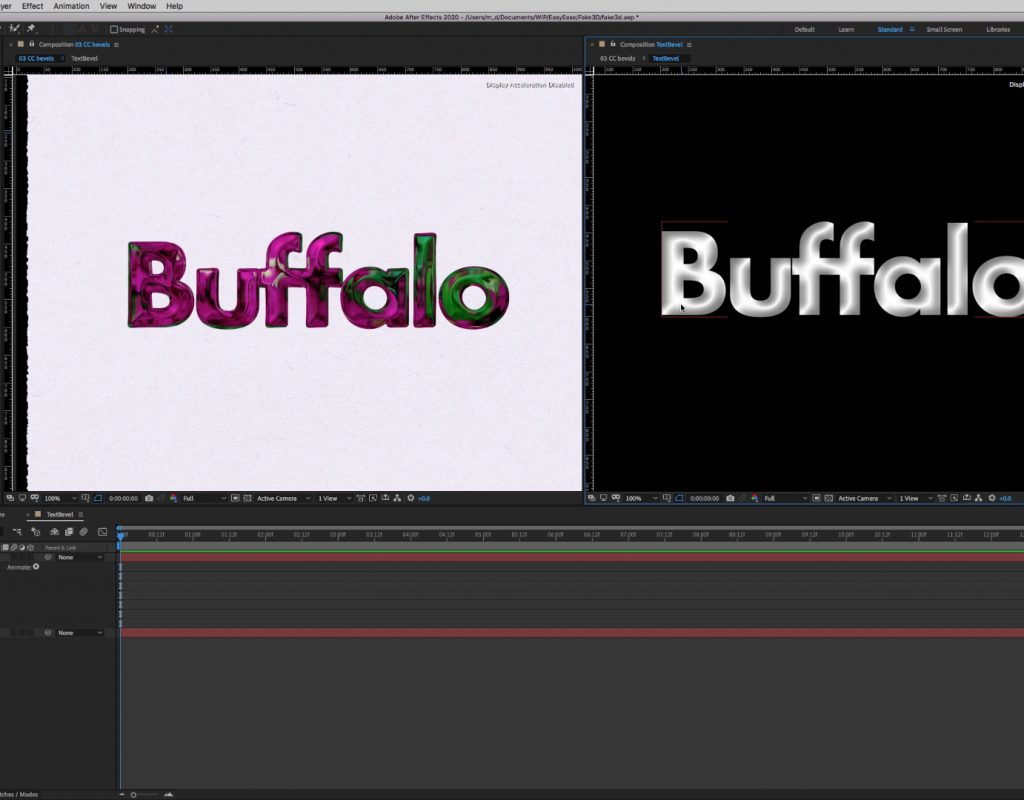
These days, every motion graphics spot seems to require at least a few elements of 3D animation. It’s flashy, impressive, and pretty much the industry standard at this point. But if you haven’t already developed mad Maya or 3D Studio Max skills, you might not have the time, in work hours or render time, to achieve an effect that can easily be faked.
First up in this week’s video we show you layer styles, the easiest way to add that extra dimension to your graphic. Adding Inner Shadow, Bevel, or even Satin will give it a layer of shading that implies it has depth. They’re simple effects, using the alpha channel information to create the shadows and highlights at the edges of the layer. For more control, we can imitate them manually through gradient fills or separate layers blended together.
Another easy way to apply 3D looks to a project is with 3D effects. Here are just a few to call out: CC Glass, CC Plastic, and CC Blobbylize, which apply shading and highlights in a more complex way to imitate how an object would react if it were made of different materials. CC Cylinder and CC Sphere, on the other hand, deform objects into specific shapes and give you controls to manipulate them. Explore the Effects Panel: There are hundreds of effects to choose from, experiment with, and combine to create unique 3D looks.
It isn’t too hard to fake 3D, depending on what effect you’re trying to achieve. It’s really just about focusing on what you want to imitate, then isolating what makes something look like that, whether it’s depth, or shading, or movement, and recreating that with the tools you’re familiar with. If you’re interested in a more in-depth look on the techniques we talked about today, check out the Fake 3D webinar on moviola.com, where this and everything else are absolutely free to watch!

